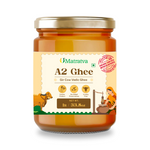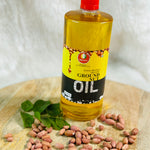traditional Punjabi dish. Sarson da Saag is a hearty and nutritious preparation made primarily from mustard greens (sarson) and other leafy greens. It's typically enjoyed with "Makki di Roti" (corn flatbread) and is a winter favorite in North India.
Here's a basic recipe for Sarson da Saag:
Ingredients:
For the Saag:
500 grams mustard greens (sarson)
250 grams spinach leaves (palak)
2-3 green chilies, chopped (adjust to taste)
1-inch piece of ginger, grated
4-5 cloves of garlic, minced
2 tablespoons cold-pressed mustard oil
1 large onion, finely chopped
2-3 tomatoes, chopped
1 teaspoon red chili powder (adjust to taste)
1/2 teaspoon turmeric powder
Salt to taste
Water, as needed
For the Tadka (Tempering):
2-3 tablespoons Matratva cold-pressed mustard oil
1 teaspoon cumin seeds
1-2 dried red chilies
A pinch of asafoetida (hing)
Instructions:
Prepare the Greens: Wash the mustard greens and spinach thoroughly. Chop them finely.
Boil the Greens: In a large pot, bring water to a boil. Add the chopped greens and cook for 10-15 minutes or until they are tender. Drain the greens and let them cool.
Blend the Greens: Once cooled, blend the greens into a coarse paste using a blender or food processor. Set aside.
Prepare the Masala: Heat 2 tablespoons of cold-pressed mustard oil in a pan. Add chopped onions, grated ginger, minced garlic, and green chilies. Sauté until the onions turn golden brown.
Add Spices: Add chopped tomatoes, red chili powder, turmeric powder, and salt. Cook until the tomatoes become soft and the oil starts to separate from the masala.
Add Greens: Add the blended greens to the masala and mix well. Cook for 15-20 minutes on low heat, stirring occasionally.
Prepare Tadka (Tempering): In a separate small pan, heat 2-3 tablespoons of matratva cold-pressed mustard oil. Add cumin seeds, dried red chilies, and a pinch of asafoetida. Let them sizzle.
Add Tadka to Saag: Pour the prepared tadka over the saag and mix it in.
Serve: Sarson da Saag is ready to be served. It's traditionally enjoyed with Makki di Roti (corn flatbread), a dollop of fresh butter, and a side of jaggery or pickles.


















